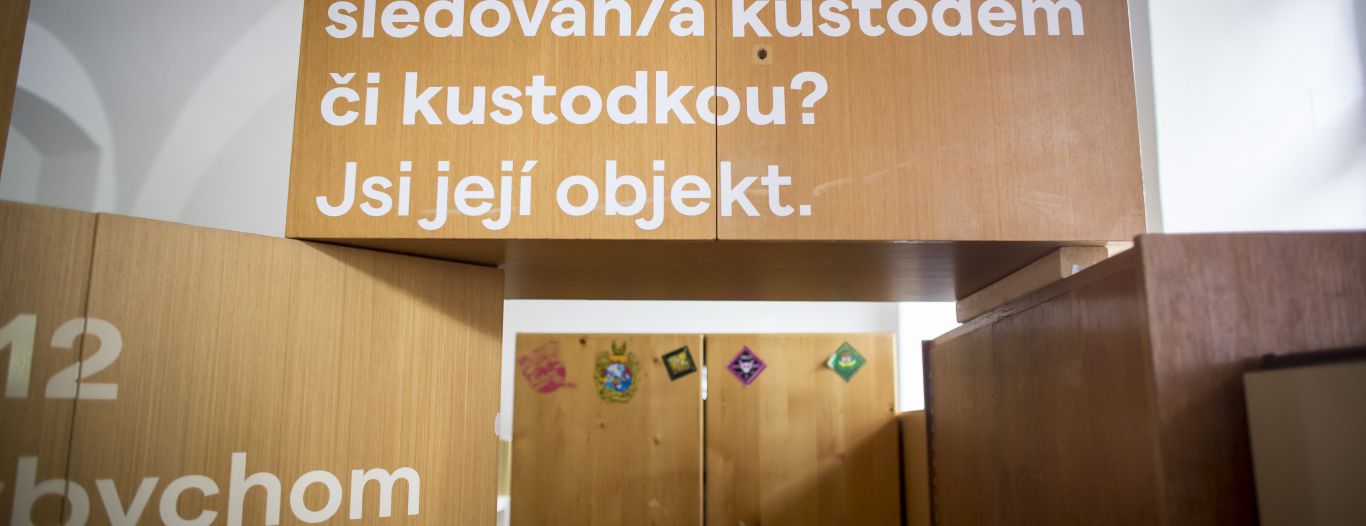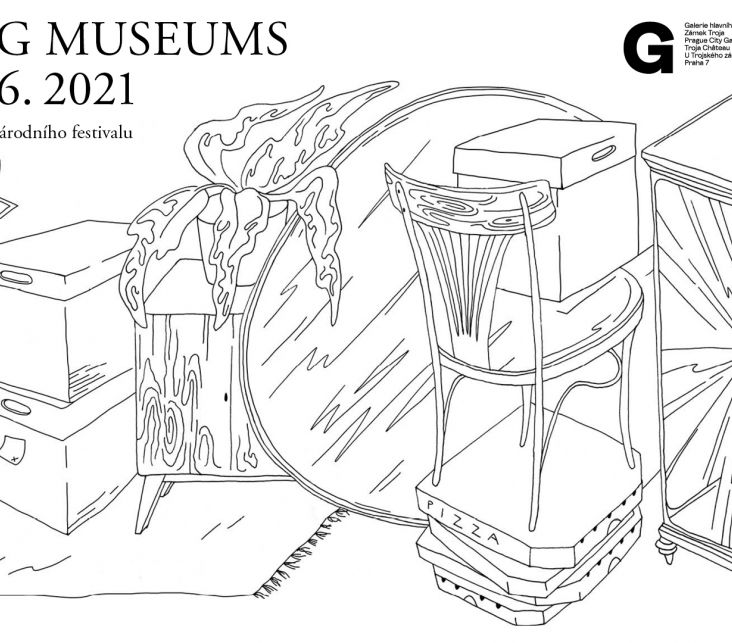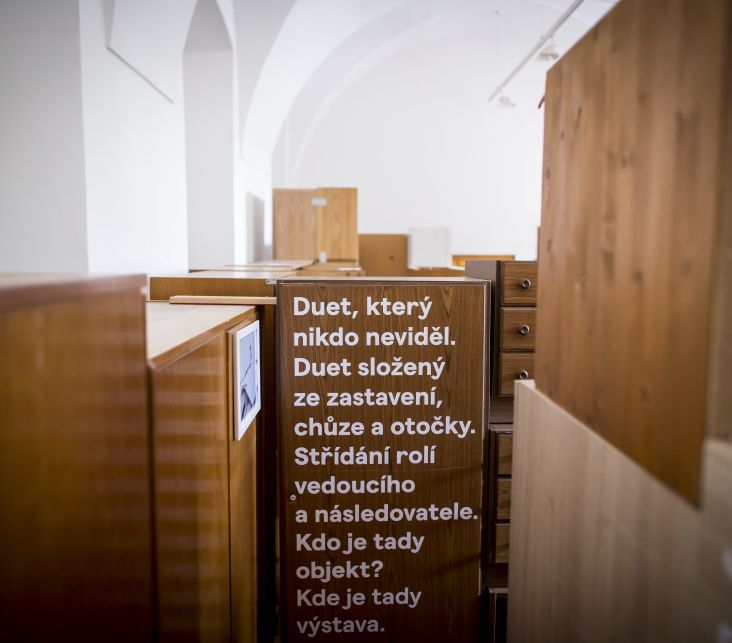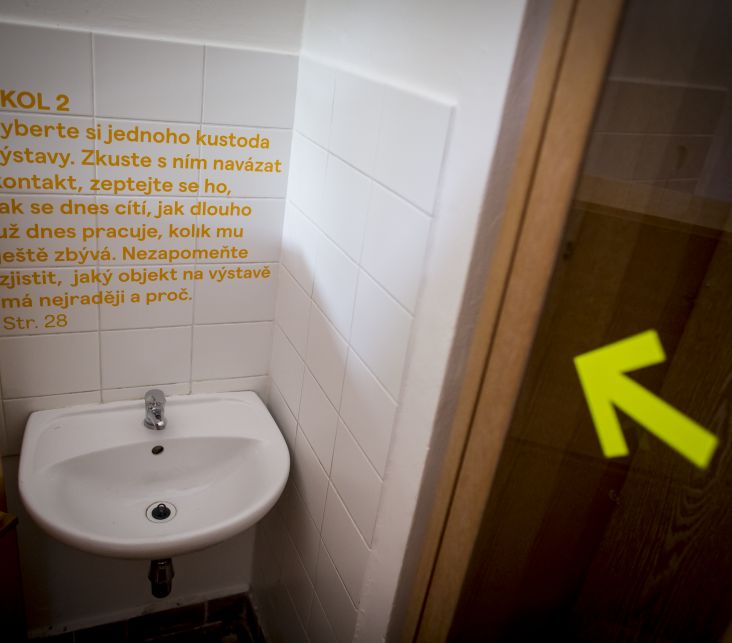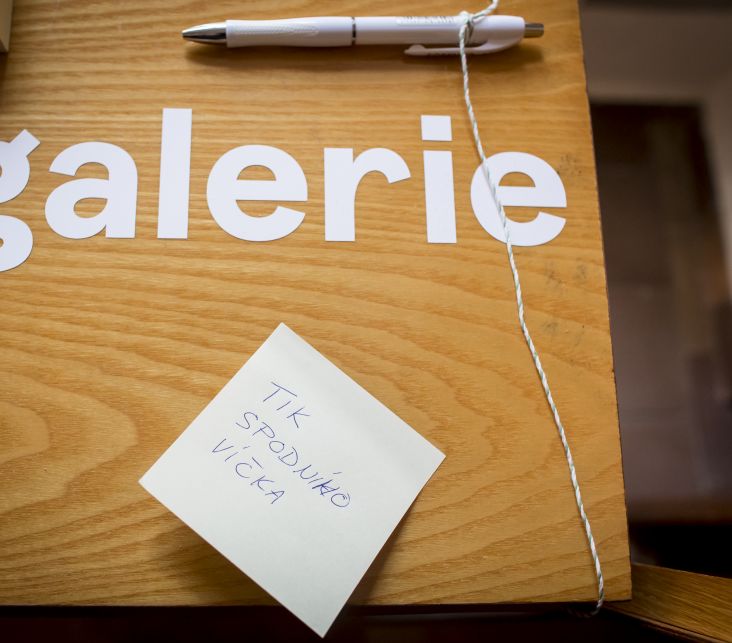DATES:
27.5. - 29.6.2021
LOCATION:
Zámek Troja, Praha
PROJECT AUTHORS:
Tereza Ondrová, Nina Jacques, Markéta Perroud, Katarína Morávek Ďuricová, Dominik Žižka
TEXT AUTHORS:
Tereza Ondrová, Nina Jacques, Markéta Perroud, Karla Hlaváčková, Katarína Morávek Ďuricová
CONCEPT AND CREATION OF INSTALLATION:
Kateřina Šedá
PRODUCTION:
Katarína Morávek Ďuricová
TECHNICAL REALISATION:
David Ondra, Martin Krsek, Kateřina Adamová, Filip Šamalík, Hynek Tichý, Eduard Baroch, Júlie Pecková, Vladimír Basjuk
VIDEO:
Dominik Žižka
PHOTOS:
Vojtěch Brtnický a archiv projektu Dancing Museums.
The exhibition is organiSed by Prague City Gallery and Tanec Praha / TANEC PRAHA - festival
www.dancingmuseums.com
![]()

![]()
The Dancing Museums exhibition gives the public a look into the three-year collaboration of Tanec Praha, Tereza Ondrová, Nina Jacques, Dominik Žižka and the Prague City Gallery, who participated in the pan-European research project of the same name.
OPENING HOURS
TU - TH 10 - 18, FR 13 - 18, SA - SU 11 - 18, MONDAYS CLOSED
Visitors enter the exhibition space at their own risk. Visitors aged 15 or younger must be accompanied by an adult. The exhibition space features uneven floors and low ceilings - please mind your step.
ABOUT
The global coronavirus pandemic has dramatically changed the lives of all research participants, as well as the project itself. Most of the activities have moved to some kind of virtual world, but in fact to our living rooms, bedrooms, kitchens, to the deserted streets of our home cities.
The installation, which was created in collaboration with Kateřina Šedá, follows up on the international workshop in Prague How to Physically Design a Work of Art and Art Space and How Can This Experience Change Our Perception? with the secondary title How to be Together When We Can't be Together? Due to the persisting risks associated with the coronavirus pandemic, not all international artists and project partners were able to attend the workshop in person last June. It was necessary to find new, so far untested ways to present the project. Despite the challenging situation, the Tanec Praha team, in cooperation with Tereza Ondrová, Nina Jacques, Dominik Žižka and partners from the Prague City Gallery, successfully created an intensive six-day workshop, which connected work teams from all over Europe through online and offline activities. As part of the program, Kateřina Šedá led a workshop called Tourists, Welcome Home!, activating the participants in their own homes and inviting them to explore the familiar space in a new way. Participants turned into guides to their own apartment, house or room.
Kateřina Šedá's installation recalls the time of this virtual workshop and gives space for the physical meeting of Dancing Museums with the public.
Kateřina Šedá:
"The last year has changed many people's view of "normal life." Staying at home and radically restricting movement has become a new phenomenon of life for a large part of the population. Restrictions on travel and the transformation of tourism have fundamentally transformed our public space. Once sought-after destinations have become depopulated. Staying in place thus contributed to a new familiarity with the immediate vicinity of the home and to the radical development of a new form of travel, and these are clearly "long-distance bridges". Not only in the form of online connections, but also mutual help and solidarity.
Social and physical lockdown has become the main theme of the installation, which is to throw the visitor into the non-standard situation of a large apartment full of stuff and to make them find their way in it. Besides signs and a signpost, a special method of sightseeing will help the visitor find their own path to the individual outputs of the Dancing Museums project. It will take place using a "long-distance bridge" – searching for and climbing pieces of furniture that we have taken from various apartments in Prague and the surrounding area. We have attempted to create the illusion of a hopeless lockdown situation, but at the same time activate the viewer to cope with it, find a way out and share the stories and events they have experienced at home during the last year. During their trip, the visitor can leave a message and write or draw their own story on the furniture. The individual journey thus naturally turns into a common path.
A long-distance bridge is also a form of help, which is why we like to dedicate individual pieces of furniture to those who really need them after the exhibition. Just write your personal story about the piece you like best and leave your contact details."
DANCING MUSEUMS – The Democracy of Beings (2018 – 2021) supports long-term collaborations between dance organizations, museums or galleries, universities and the public across Europe. It seeks, develops and shares new ways in which dance can help visitors and audiences experience art and cultural heritage and engage both intellectually and viscerally.

